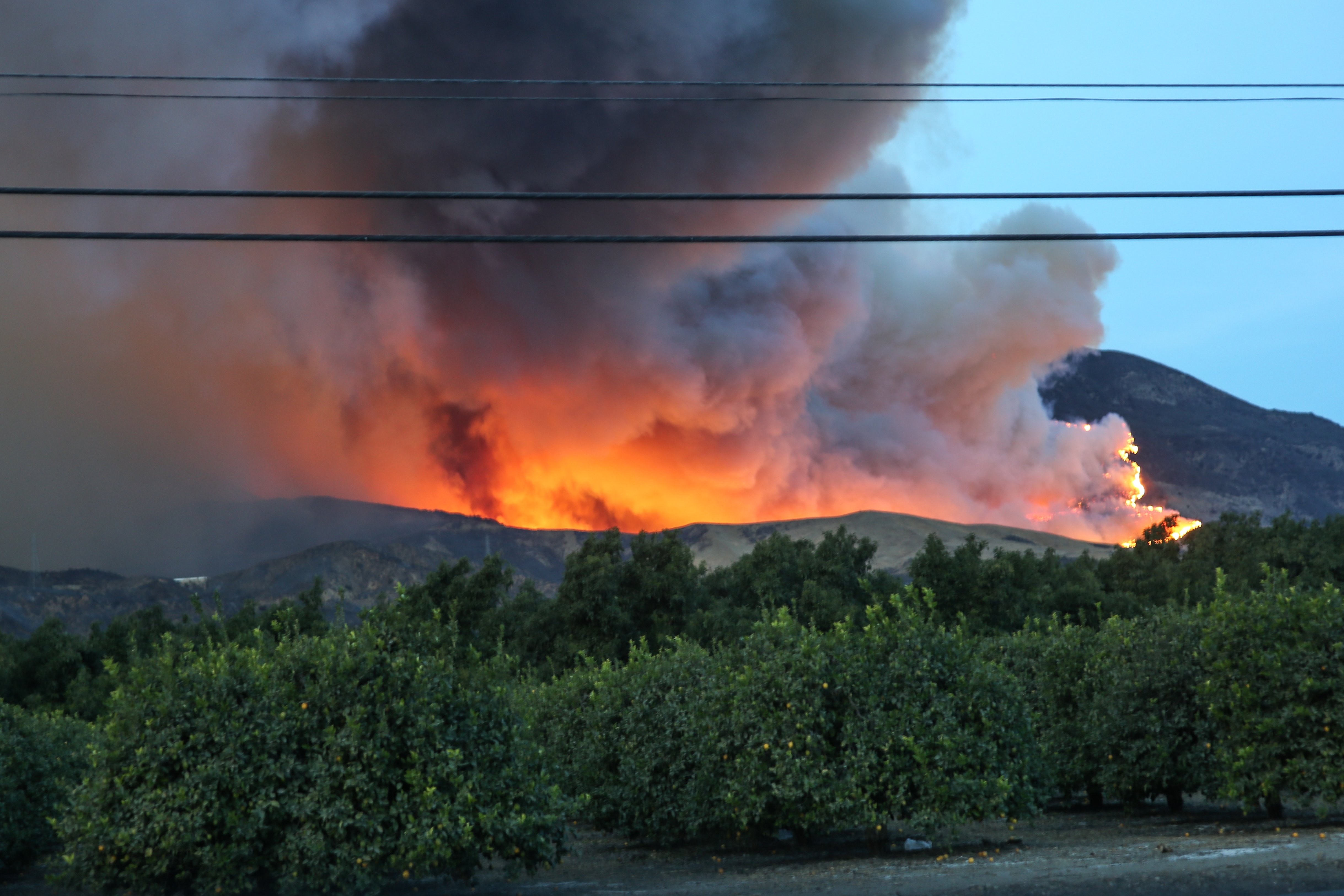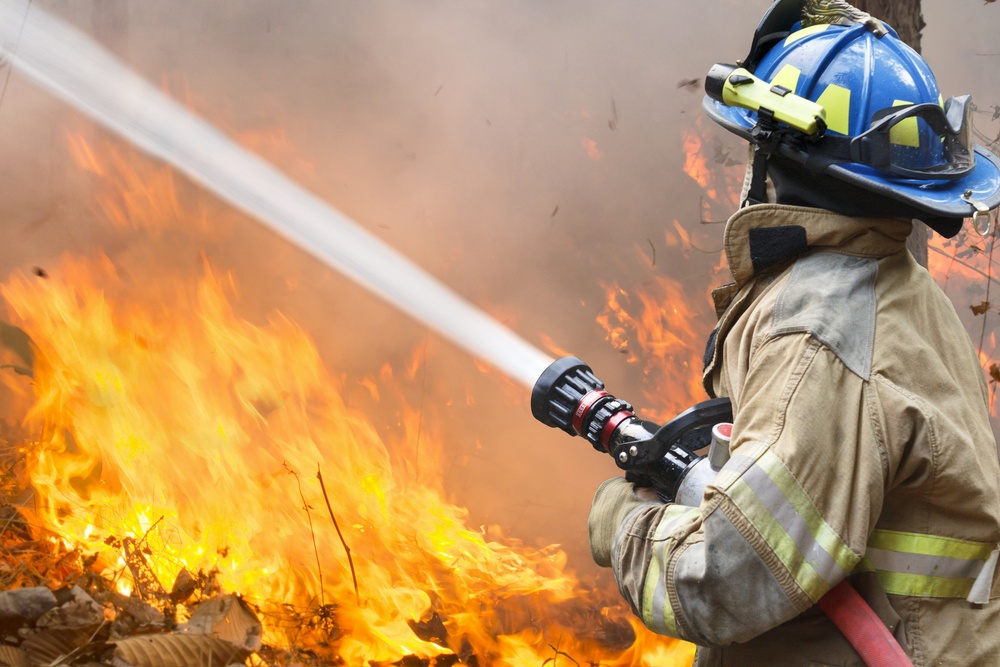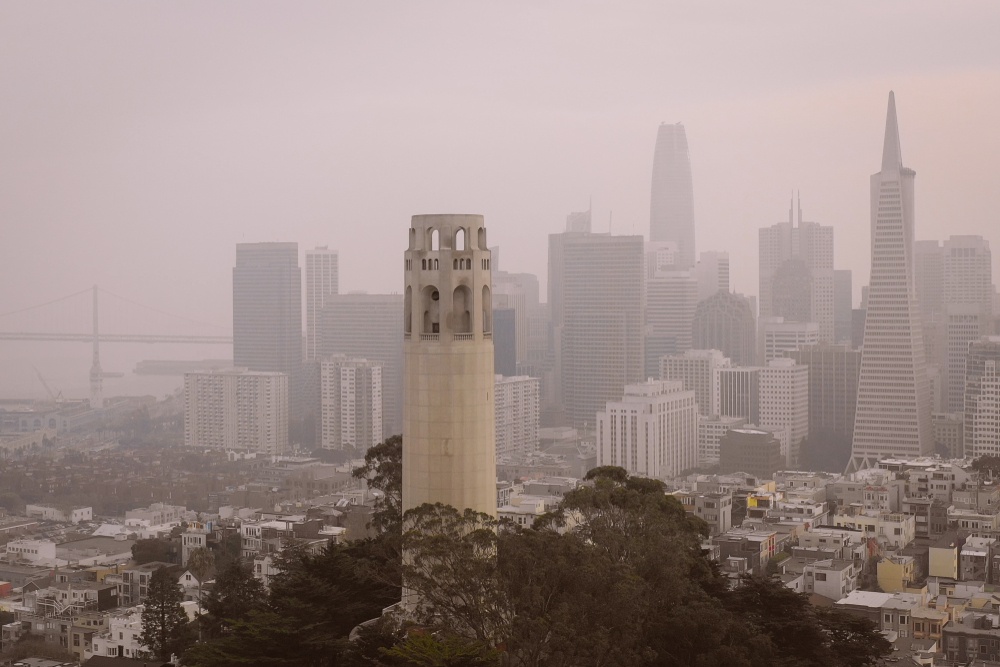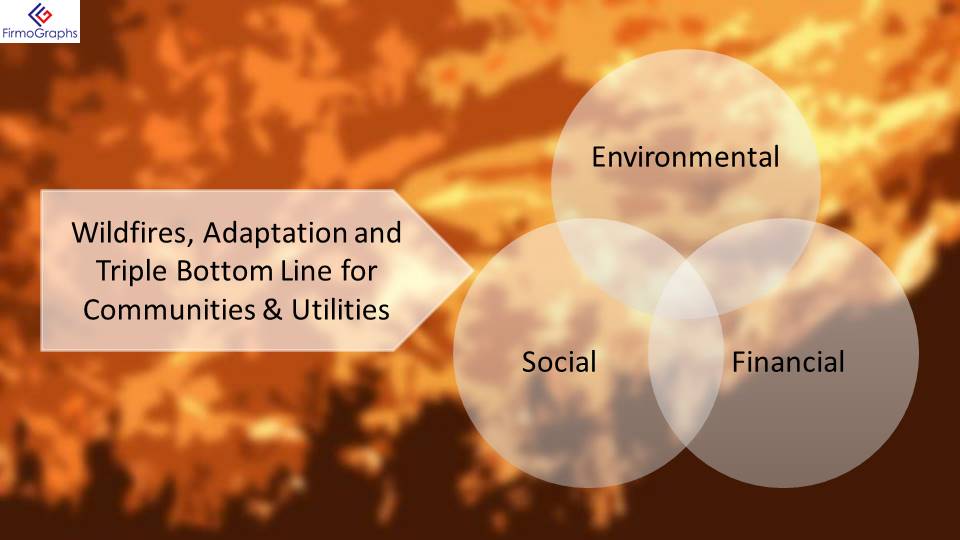The scourge of wildfires in California is a harsh reality that can be considered in the context of the sustainability triple bottom line (TBL) of Social, Financial, and Environmental performance for utilities. For utilities and the communities served by them in our state, adaptation to wildfire risk is a must because that risk is part of the “new normal”.
Societal Impacts

During the recent fires, the San Francisco Bay Area was in a hazy cloud of smoke for a few weeks. Here in Oakland, although we were more than 150 miles from the fire, many people were wearing N95-rated masks outside to protect against fine particulate smoke inhalation.
Our family was fortunate. Although my uncle had to evacuate, he was safe, and his home in Magalia (near Paradise) was spared. As is the case with other families that have school-aged children, ours were home today with school being canceled. It was the largest school cancellation in California history, reportedly keeping 1 in 6 school children home for one or more days. A few days of canceled school and smokey air are nothing to bear compared with the loss of life or home. As of December 1st there are 88 people confirmed dead and around 200 people missing.
Listening to podcast interviews with the California Department of Forestry and Fire Protection (CAL FIRE), it sounds like the idea of a “fire season” is becoming irrelevant, that some parts of the state may have year-round fire hazards. I’m wondering, is this what adaptation looks like? Is it going to be normal for Bay Area citizens to don smoke masks, and for kids to have “smoke alert days”, this time of the year. If the fires are related to climate change (seems likely), man-made or not, smoke masks are a sort of climate adaption. From the TBL sustainability perspective, there is certainly a social impact here of lost school days, health, homes, and lives.
Financial Impacts

From the TBL perspective, there is certainly a financial impact, for ratepayers, utilities, and communities. Those that are fortunate enough to have fire insurance still need to rebuild. As ratepayers, we will face higher rates going forward. Impacted communities will need years to recover from a loss of tax revenue as families and businesses rebuild.
Our utility, PG&E, is also suffering substantial financial and market capitalization losses. There are numerous lawsuits filed, claims that PG&E equipment may have started the Camp Fire. PG&E’s stock plummeted during the fire, and they’ve filed a rate increase request with the Federal Energy Regulatory Commission (FERC) to account for the extreme wildfire danger their system is exposed to.
If weather patterns hadn’t been changing over the past several years, with our weakened, pine beetle-damaged, fire-prone forests in California, it seems unlikely that these fires would be happening. Whatever the ignition source is found to have been, climate change is creating the fuel.
There is strong awareness in California of the impact and importance of climate change preparation. In the past year the California Public Utilities Commission (CPUC) implemented fire prevention rules. One artifact of that work is the Fire-Threat Map that delineates areas in the state where there is an elevated or extreme risk, available online at https://ia.cpuc.ca.gov/firemap/ with downloadable files.
In September 2018 the California Legislature approved SB 901. SB 901 authorizes the Public Utilities Commission to provide certain types of utility financial relief related to wildfires provided that the utility took adequate precautions. Utilities are also now required to prepare a wildfire mitigation plan subject to public review and comment.
Financial impacts associated with wildfires, for both communities, ratepayers and the our utilities, will take years to understand.
The Environment

Finally, the last leg in the 3-legged TBL stool is the environment itself. Northern California is valued for its environment by residents and visitors alike. The loss of habitat, watershed, and parkland environment in these massive fires is staggering.
According to a recent article in Popular Science, the amount of burned acreage in the past 5 years is nearly 5.4 million acres. With California being about 100 million acres, roughly 5.4 percent of the state has burned just in the past five years. Although fires certainly do threaten and destroy the built environment, much of the burned land is still in a relatively natural state.
As someone who enjoys the outdoors and our diversity of natural habitats, the environmental loss is heart-breaking in addition to the already staggering loss of life.
Conclusion
Clearly, adaptation to a dryer climate and everything that comes with it is going to become the new normal in our state. The environment adapts automatically, as we are seeing by the dramatic increase in wildfires. We, as humans, don't. We don't want to adapt to less water and more fire but we must.
We will need to see how US utilities adapt in terms of the “financial” aspect of the TBL. Power utilities are adapting, along with the state legislature and Public Utility Commission, to strike a balance between preparation responsibilities and the shared financial burden associated with wildfires. Water utilities may adapt in terms of water supply budgets when watersheds are damaged by fire, on top of existing drought-related changes.
Just as water loss prevention has become more important, new industries will evolve around provide fire prevention and recovery services. Methods, materials, and buildable sites for construction will evolve.
Adaptation to drought and fire here in our state is happening. Perhaps considering this in the context of the TBL may help society meet the needs of all parties, California ratepayers, municipalities, and utilities.
Disclaimer
None of the information we provide may be taken as legal advice. Please consult an attorney if you require a legal interpretation of this information.
Any information contained on this website or within any attachments is offered without representation or warranty as to its accuracy or completeness and FirmoGraphs, LLC cannot be held responsible for loss or damage caused by errors, omission, misprints or your misinterpretation of such information. Seek competent professional advice prior to relying on or utilizing such information in any manner as any such use is at your own risk.


